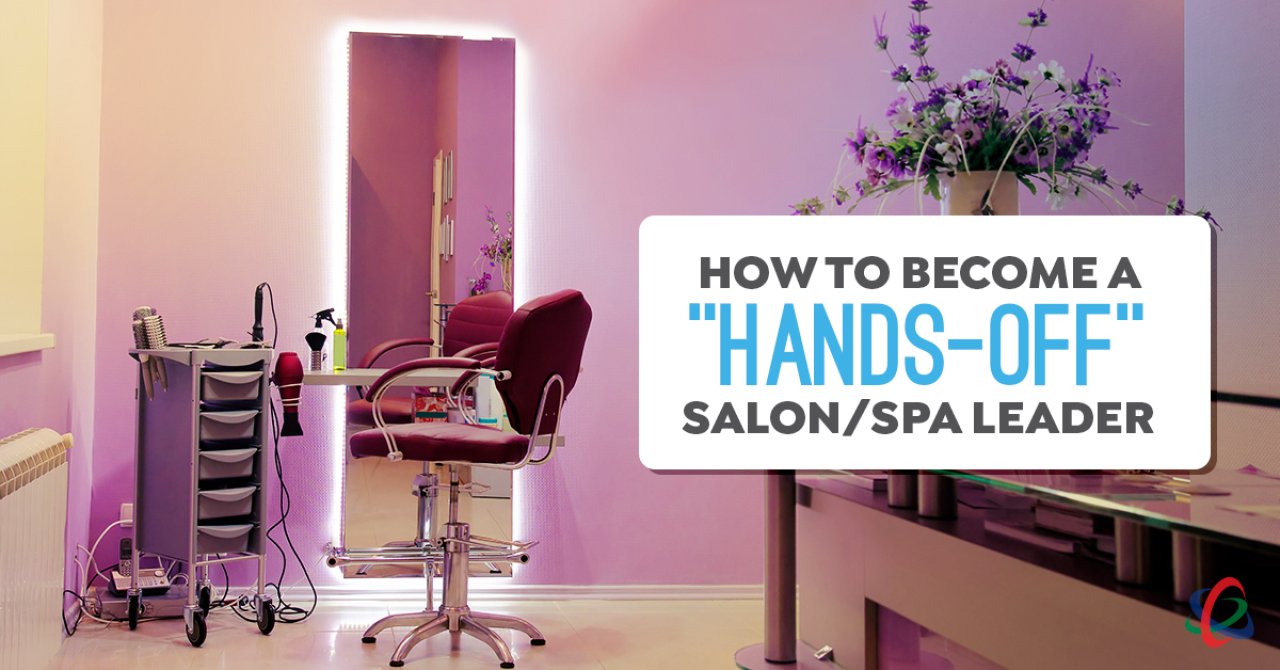How to Become a “Hands-Off” Salon/Spa Leader

Many salon/spa owners fantasize about someday being an “absentee owner.”
I purposely use the word “fantasize” because absentee ownership is a truly elusive business destination to achieve.
My definition of absentee ownership: To own a salon/spa business that operates efficiently with the critical numbers to prove it, consistently delivers on its brand promise, provides career and income growth for employees, and generates a predictable Net Profit and Return on Investment.
So, what does “absentee ownership” have to do with becoming a “hands-off” salon/spa leader? EVERYTHING.
Becoming a hands-off leader is a non-negotiable prerequisite to successful absentee ownership.
A PROFOUND QUESTION: What would happen if you were unable to work in your company and needed to continue taking a paycheck?
For salon/spa owners, being unable to work and be financially dependent on their company is perhaps the scariest of thoughts.
So, the scarier this thought is to you, the owner, the more it says about the state and sustainability of your business.
Becoming an absentee owner is a business decision.
Becoming a “hands-off” salon/spa leader is about making your business sustainable through empowerment.
Here are my No-Compromise Leadership strategies to become a hands-off salon/spa leader:
- Fewer hats and spinning plates: Yes, being an owner comes with massive responsibilities. Holding on to all of those responsibilities may feel like the right thing to do, but it’s stressful. Empowerment is perhaps the most powerful tool in a leader’s toolbox — but only if the leader chooses to use it. KEY: Empowerment is about shared responsibility, team culture, and trust. The more you empower others, the more hands-off you become.
- Preparation before empowerment: I began methodically sharing responsibilities with my team members many years ago. Like developing any skill or expertise, there needs to be coaching, training, and opportunities to test and hone those skills. In June 2017, I was hit and severely injured during a training ride on my bicycle. I spent 20 days in the hospital and three months recovering. My company didn’t skip a beat. KEY: When the unexpected happened to me, my team simply continued to do their jobs. It was the years of preparation that allowed me the time to recover. If I held on to all the control and decision making, my company would have suffered in my absence.
- Letting go of the controls: You’ll never realize the power of empowerment until you begin taking your hands off the controls. It’s not about letting go all at once. It’s about the gradual transition of key responsibilities and accountabilities from you, to members of your leadership team. KEY: Take your time. Don’t overwhelm people by dumping more on them than they can handle. Let their wins build confidence. Then add a bit more. The beauty of empowerment is that it begins to take on a momentum all its own.
- Systems set you free: This always has to be a key element in your plan to become a hands-off leader. Systems are the “here’s how we do it” tools to get predictable results. KEY: Systems give structure and discipline to empowerment. Train and coach for consistency.
- Hand off smartly: Just as you don’t want to set members of your leadership up for failure, you don’t want to set yourself up for unpleasant surprises either. This is where the trust factor comes into play. KEY: Hands-off leadership doesn’t mean blind trust. Hands-off simply means “allowing those you empower to do the work.” Simply put, it means oversight and paying attention. This ensures that a sense of urgency is maintained throughout your culture.
- Eighteen to twenty-four months: Culture shifts take time. Becoming a hands-off leader is a culture shift. The best strategy is to lock your thinking into a transition that will take eighteen to twenty-four months to complete. KEY: The hands-off leader’s primary role is to maintain clarity on where the company is going, how it’s going to get there, where the responsibilities lay, and what the timelines are. Any attempt to go hands-off, without maintaining clarity throughout your company and culture, will most definitely derail the change effort.
Here’s my challenge to you: Take the time to truly assess your role in your salon/spa.
If you have a shelf full of hats and not enough time to wear them all, it’s time to begin the shift to becoming a hands-off leader.
If you have so many spinning plates that some are starting to crash, it’s time to begin the shift to becoming a hands-off leader.
If you’re a service provider in your salon/spa that brings in big dollars, could you earn the same income if you were unable to do services? If not, it’s time to begin the shift to becoming a hands-off leader.
Hands-off leadership is smart business.
Comments
No comments found. Start the conversation!
Leave a Comment